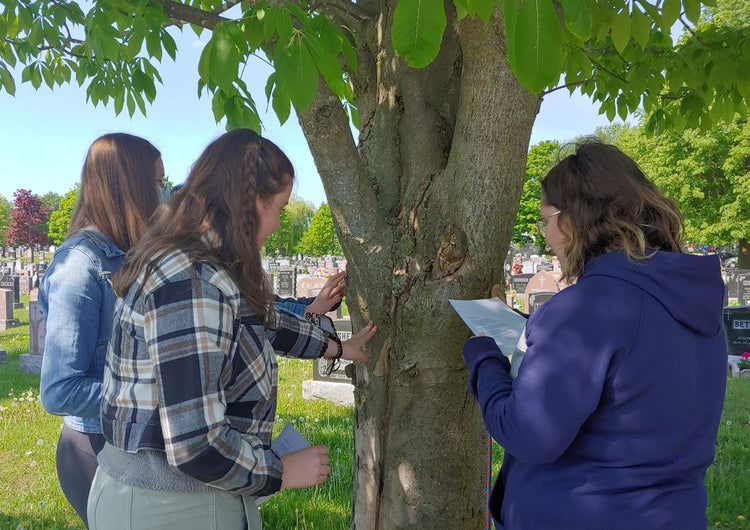As a co-founder of Little Forests Kingston and teacher at KSS, I was often in the enviable position of being able to collaborate with teachers who were bringing ideas of multi-species justice, decolonization and the centering of Indigenous Way of Knowing into their classrooms. Once such collaboration was with art teacher Morgann Rymal in the Grade 9 arts courses, Expressing First Nations, Metis and Inuit Cultures.
Throughout the semester, Morgann helps her students explore the themes and concerns of many different Indigenous artists in Canada while guiding them to develop their artistic skills. At the end of semester, a culminating activity with the theme of "All My Relations" is completed by these students. Here is Morgann's introduction to the gallery show from the 2022 classes;
"Grade 9 students in the Expressions of First Nations, Metis and Inuit Cultures course learned about Indigenous worldview and explored the key values of interconnectedness, walking softly and all my relations through the artwork of Metis artist Christi Belcourt and performative art experiences on the land. This exhibit is a visual representation of their learning. You will see pieces of artwork that celebrate Mother Nature and our planet and the importance of stewardship towards the land and all its inhabitants. Other pieces communicate powerful messages of equality and honouring all our stories and identities."
You will see in her introduction she refers to "performative art experiences on the land" as well as Christi Belcourt's remarkable body of artistic work as some of the inspiration for their work. This performative art experience was one she and I created together. Using inspiration from this powerful gallery show by Lisa Hirmer called, Forests Not Yet Here , we created an experience for our students that connected them directly to the trees in their neighbourhood.


Poems like these two written by me, inspired by Lisa Hirmer's work in her book, Forests Not Yet Here were posted around the KSS library;
Stand next to a tree
Think about the sap moving through this tree,
water, sucrose and nutrients,
creating matter out of the sun's energy.
Think about the animals that depend on this tree's ability
to take water and solar rays to create food
and then consider now the tree freely shares its body with all.
Think about your own body, the blood that flows through your veins regulated by its central pump, the heart.
Each suited to life experience, slow and steady, quick and fast.
Think about how interesting a tree must find your quick movements,
your rapid breaths.
Think about spending your whole life in this place, moving to these rhythms,
influencing these environs.
Imagine how long this life could be.
And this one
Stand next to a tree.
Think about this tree's roots stretching down into the ground.
Think about the branching of these roots, branching down to reach and find.
Think about how you stretch and grow, reaching to find.
Think about the partnerships this tree has with the mycorrhizal network, the 'fungus roots'.
How each provides for the other, releasing nutrients, sending messages.
Mother trees communicating with their young through their fungus allies.
Protecting, nurturing.
Quietly, without human notice.
Think about how you communicate.
Sometimes exuberant, sometimes gloomy,
Alternatively loud, soft, thoughtless, thoughtful.
Think about how a tree talks to you. What is this tree telling you?
What do you want to ask this tree?
Think about how you talk to this tree. What are you telling it?
Students were invited to do a gallery walk and read each of the seven poems posted. Once all were read, they were asked to choose the poem they felt spoke most strongly to them and then we went outside into our neighbourhood. They found a tree to spend time with, to read the poem and contemplate their own relationship with the tree, with all trees and with forests.


What follows are some of the artworks and artist statements created by this experience and the rich semester of work Morgann provided her students. Central to it all are the artistic voices of Indigenous artists that these students explored and the impact that resulted.






By Joanne Whitfield

